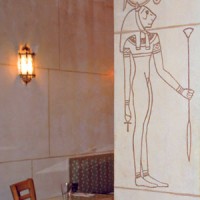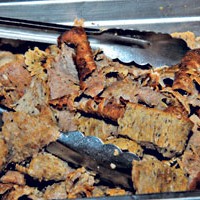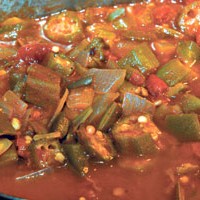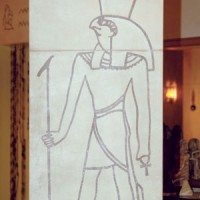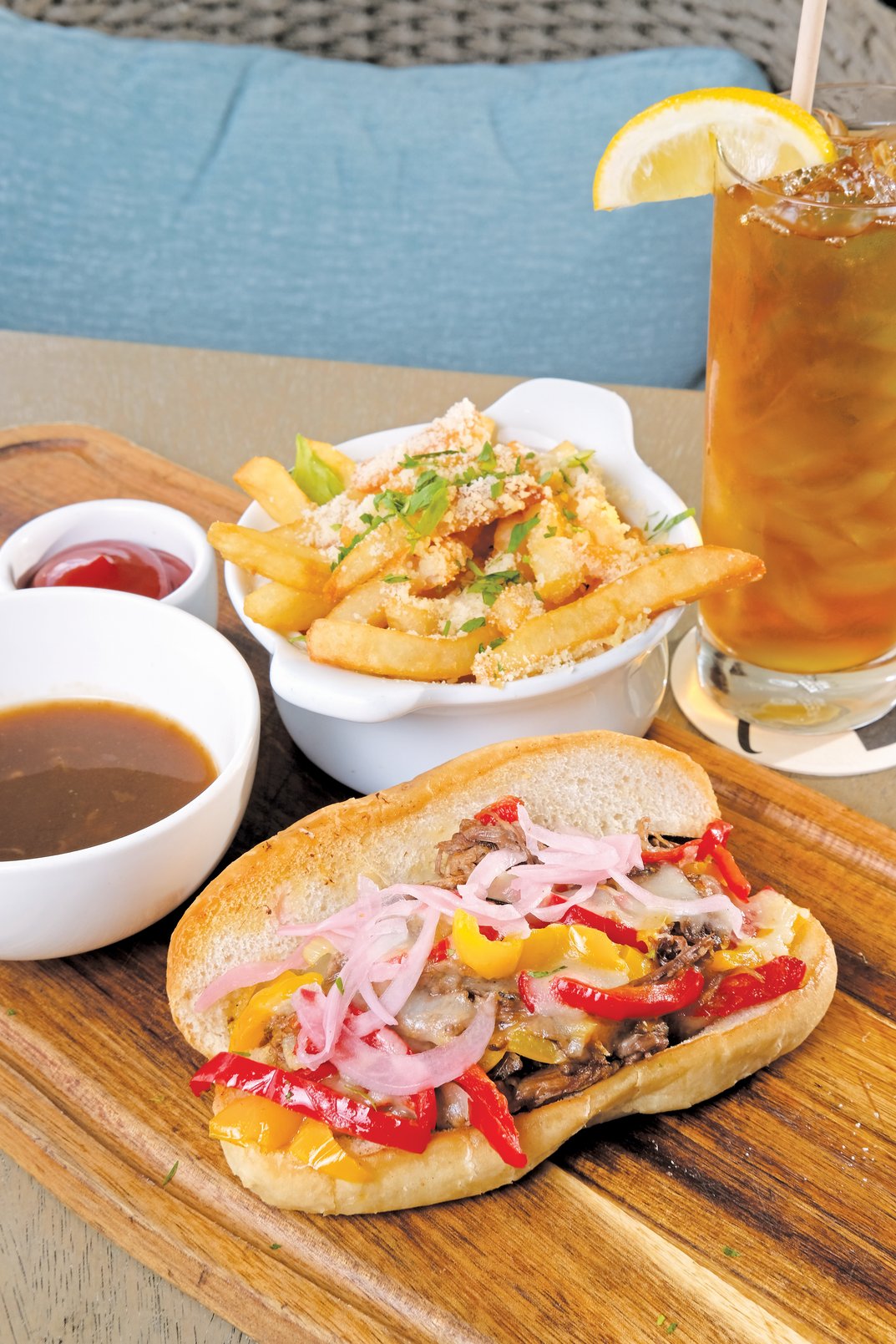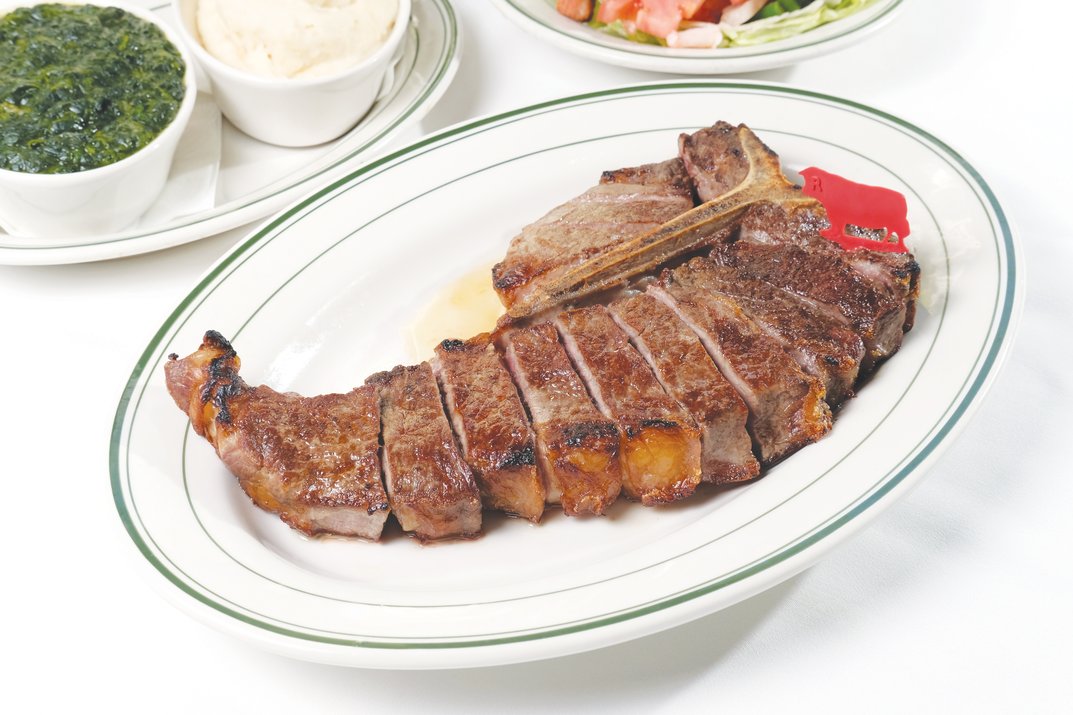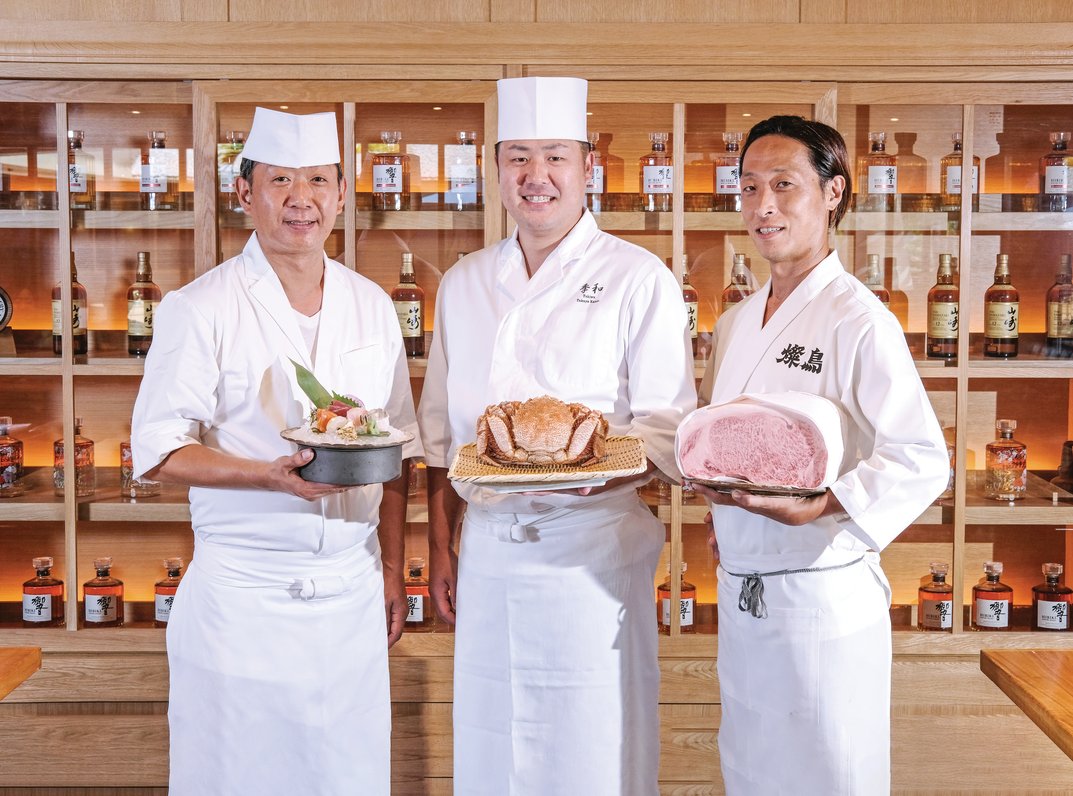Escape to Egypt
Features Inside FeatureMay 1, 2011
Story By: Dining Out Team |
Atrip to The Pyramid Restaurant is like taking a magic carpet ride to a far-off land.
Located on Kapahulu Avenue near Pizza Hut and Peggy’s Picks, the Egyptian restaurant is an oasis set among the bustling traffic outside. Tables are swathed in rich fabrics of purple, green and gold, while music and enticing aromas waft through the dining room air. Enhancing the experience even further are hookahs, intricately decorated mirrors, folding screens and walls adorned with hieroglyphic etchings, giving one the feeling of stumbling across an ancient tomb of some long-ago pharaoh.
 Owner Tarek Guirguis.
Owner Tarek Guirguis. Enjoy a meal with a show at Pyramid's, as belly dancers entertain diners.
Enjoy a meal with a show at Pyramid's, as belly dancers entertain diners. Hieroglyphic etchings grace the interior of the restaurant.
Hieroglyphic etchings grace the interior of the restaurant. Belly dancers perform Wednesday through Sunday.
Belly dancers perform Wednesday through Sunday. Beef and Lamb Shawerma (part of the buffet).
Beef and Lamb Shawerma (part of the buffet). Hommus (part of the buffet).
Hommus (part of the buffet). Tabouleh (part of the buffet).
Tabouleh (part of the buffet). Bamia "Okra" (part of the buffet).
Bamia "Okra" (part of the buffet). Pistachio Baklava ($4.95).
Pistachio Baklava ($4.95). Pyramid Kona Cafe Ice Cream ($5.25).
Pyramid Kona Cafe Ice Cream ($5.25). Egyptian decor is an important element at Pyramid's.
Egyptian decor is an important element at Pyramid's.
“I decided to make the decor as Egyptian as I can,” says owner Tarek Guirguis, who was born and raised in Alexandria, Egypt. “People, they walk in and say, ‘Wow!,’ it’s like they’re in a different world. The atmosphere is totally different, it’s like you’re not in Hawaii anymore!”
The setting lends itself perfectly for the opulent eating expedition that awaits. Spanakopita, Baba Ghanouj, Mousaka, Shish Kabob, Farouge and Baklava are just some of the authentic Egyptian dishes found on the menu. A lunchtime all-you-can-eat buffet ($12.95) is stocked with a wide selection of some of The Pyramid’s most popular items: Tabouleh, Falafel, Greek Salad, Potato Salad, Fries, Hommus, Bamia, Shawerma, Chicken Shawerma, Basamati Rice, Pita and Rice Pudding.
“It’s very close to Greek food,” says Guirguis of the health-conscious fare, which is prepared with heart-healthy olive oil and spices rather than fat and preservatives.
“We use a lot of cumin, coriander, garlic, olive oil … Cumin is the most important spice we use in Egypt. It’s in almost everything. And then we have some other spices not many people know about, like sumac or zarta.”
Sumac, Guirguis says, is made from dried grape skins that are ground into a fine spice, and zarta is a combination of sesame seed, oregano, cumin, salt, pepper and other various spices.
“We have lots of vegetarian dishes, too,” he adds, referencing the long list of appetizers like Fool Moudamis and Stuffed Grape Leaves that are made meat-free, along with three vegetarian entrees: the Sphinx, a combination of half Greek salad, spanakopita, falafel and hommus; Vege Mousaka, fried eggplant layered with tomato sauce and mushrooms; and Bamia, a stew of okra sauteed with onion, garlic and green peppers cooked in a thick tomato sauce over a slow fire.
“We try to balance our menu between vegetarian and meat-eaters so there’s something for everyone,” says Guirguis.
“We don’t have any hot dishes,” he adds. “We use a little bit of red pepper, but you cannot tell it’s hot. Our food is mainly mild — it’s not like Indian or Pakistani.”
According to Guirguis, Egyptian and Greek food are nearly identical because of the countries’ close proximity to each other across the Mediterranean Sea. In fact, after Guirguis moved to Hawaii in 1989, the first restaurant he opened was The Greek Corner in Puck’s Alley.
“I had the Greek Corner for five years, and people were complaining that I’m Egyptian and I have a Greek restaurant, so that’s how I got the idea to open an Egyptian restaurant,” says Guirguis, who is three-quarters Egyptian and a quarter Greek.
“We just celebrated our 15th anniversary in November, and we’re doing very good,” Guirguis adds. “The lunch buffet helps a lot. It’s very good for customers. They taste the food and remember us, and any party or occasion, they come.
Customers also come, he says, for the belly dancers, who perform at 7:30 and 8:30 p.m. Wednesday through Sunday.
“The belly dancers do a very nice show for everyone. Kids love it more than adults!” says Guirguis, adding, “Many of (the belly dancers) are hula dancers, and that’s how they learned
belly dancing. It’s very close, even the dress too.”
And whether you travel by car, carpet, camel or caravan to The Pyramid Restaurant, rest assured that there is more than enough free parking available.
“There’s free parking in the back, which is very important,” Guirguis says. “It’s in the back of the building, and there are two kinds: underneath the building or in the yard. It’s Diamond Head Parking, but it’s free for our customers. We’ll pay for it.”
So the next time you take a trip down Kapahulu, be on the lookout for The Pyramid Restaurant, where, says Guirguis, “food is good, belly dancing is good, and atmosphere is perfect.”
The Pyramid Restaurant
- Where
- 758 Kapahulu Avenue
- Honolulu, HI 96816
- Call
- (808) 737-2900
- Hours
- Open for lunch daily
- 11 a.m. – 2 p.m.
- Dinner Monday – Saturday
- 5:30 p.m. – 10 p.m.
- Sundays
- 5 p.m. – 9 p.m.







